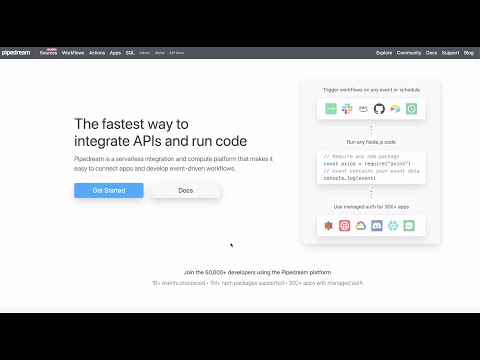What do you want to automate
with PagerDuty and Confluence?
Prompt, edit and deploy AI agents that connect to PagerDuty, Confluence and 2,500+ other apps in seconds.
Trusted by 1,000,000+ developers from startups to Fortune 500 companies
Popular Ways to Connect PagerDuty with Confluence#
Popular PagerDuty and Confluence Triggers#
Emit new event each time a new user rotates onto an on-call rotation
Emit new event each time an incident is created or updated
Emit new event whenever a new page or blog post is created in a specified space
Popular PagerDuty and Confluence Actions#
Find the user on call for a specific schedule. See the docs here
Creates a new page or blog post on Confluence. See the documentation
Removes a blog post from Confluence by its ID. Use with caution, the action is irreversible. See the documentation
Overview of PagerDuty#
The PagerDuty API offers a powerful interface to automate your digital operations management. By leveraging its capabilities on Pipedream, you can create workflows that respond to incidents, automate alerts, and synchronize incident data across various platforms. PagerDuty's API enables you to manage services, teams, and incidents, ensuring that your systems remain operational and that the right people are notified at the right time.
Connect PagerDuty#
import { axios } from "@pipedream/platform"
export default defineComponent({
props: {
pagerduty: {
type: "app",
app: "pagerduty",
}
},
async run({steps, $}) {
return await axios($, {
url: `https://api.pagerduty.com/users/me`,
headers: {
Authorization: `Bearer ${this.pagerduty.$auth.oauth_access_token}`,
"Accept": `application/vnd.pagerduty+json;version=2`,
},
})
},
})
Overview of Confluence#
The Confluence API allows you to harness the collaborative power of Confluence programmatically. With it, you can automate content creation, update pages, manage spaces, and extract data for reporting or integration with other tools. Leveraging this API within Pipedream enables streamlined workflows that can react to events or schedule tasks, interacting with Confluence data and connecting to an array of other apps and services.
Connect Confluence#
import { axios } from "@pipedream/platform"
export default defineComponent({
props: {
confluence: {
type: "app",
app: "confluence",
}
},
async run({steps, $}) {
return await axios($, {
url: `https://api.atlassian.com/me`,
headers: {
Authorization: `Bearer ${this.confluence.$auth.oauth_access_token}`,
},
})
},
})
Related Videos#
